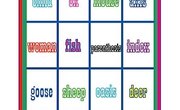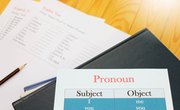Understanding parts of speech helps people use grammar and language correctly and more effectively. Proper word choice in questions involves understanding the difference between interrogative pronouns and interrogative adverbs. The differences can be confusing since the same word may have a different label depending upon its use in a sentence.
Pronouns
Pronouns are words that take the place of nouns, indicating people, places, things, feelings or ideas. Pronouns include words like "he," "them," "everyone," "myself" and "who." Interrogative pronouns create questions. Examples of interrogative pronouns include "who," "what," "whom," "where" and "whose.". They function as pronouns when they indicate a person, place or thing as in, "Who is next?" or "What is the answer?"
Adverbs
Adverbs modify verbs, adjectives and other adverbs. They illustrate concepts like how, when, where and to what degree something is done. Like interrogative pronouns, interrogative adverbs create questions. The words "how," "when," "where" and "why" are interrogative adverbs. They function as adverbs when they modify ideas in the question as in, "How did you get here?" and "Why did you ask?"
Difference
The difference between interrogative pronouns and interrogative adverbs involves their usage in a sentence. If you need to determine what part of speech an interrogative word is, simply find the word within the proper category. For example, "who" when used to introduce a question, functions as an interrogative pronoun, just as "why," when introducing a question, functions as an interrogative adverb. The words are interrogative only when they introduce a question, such as "Who is she?" In a statement such as "I asked who she was," the word is not interrogative (See Reference 1).
Other Categories
"Who," "what" and "which" function as relative pronouns rather than interrogatives when they introduce relative clauses like in "I gave her what she asked for." When the pronoun "what" modifies a noun, it functions as an interrogative adjective instead of a pronoun, like in the sentence "What color is that car?" In these cases, the word is used to describe, asking what kind of color in this example, as opposed to standing for something, as in "What did you want?" which asks what thing you wanted. The "what" in "What did you want?" functions as a pronoun.
Related Articles
References
Writer Bio
Kristie Sweet has been writing professionally since 1982, most recently publishing for various websites on topics like health and wellness, and education. She holds a Master of Arts in English from the University of Northern Colorado.











